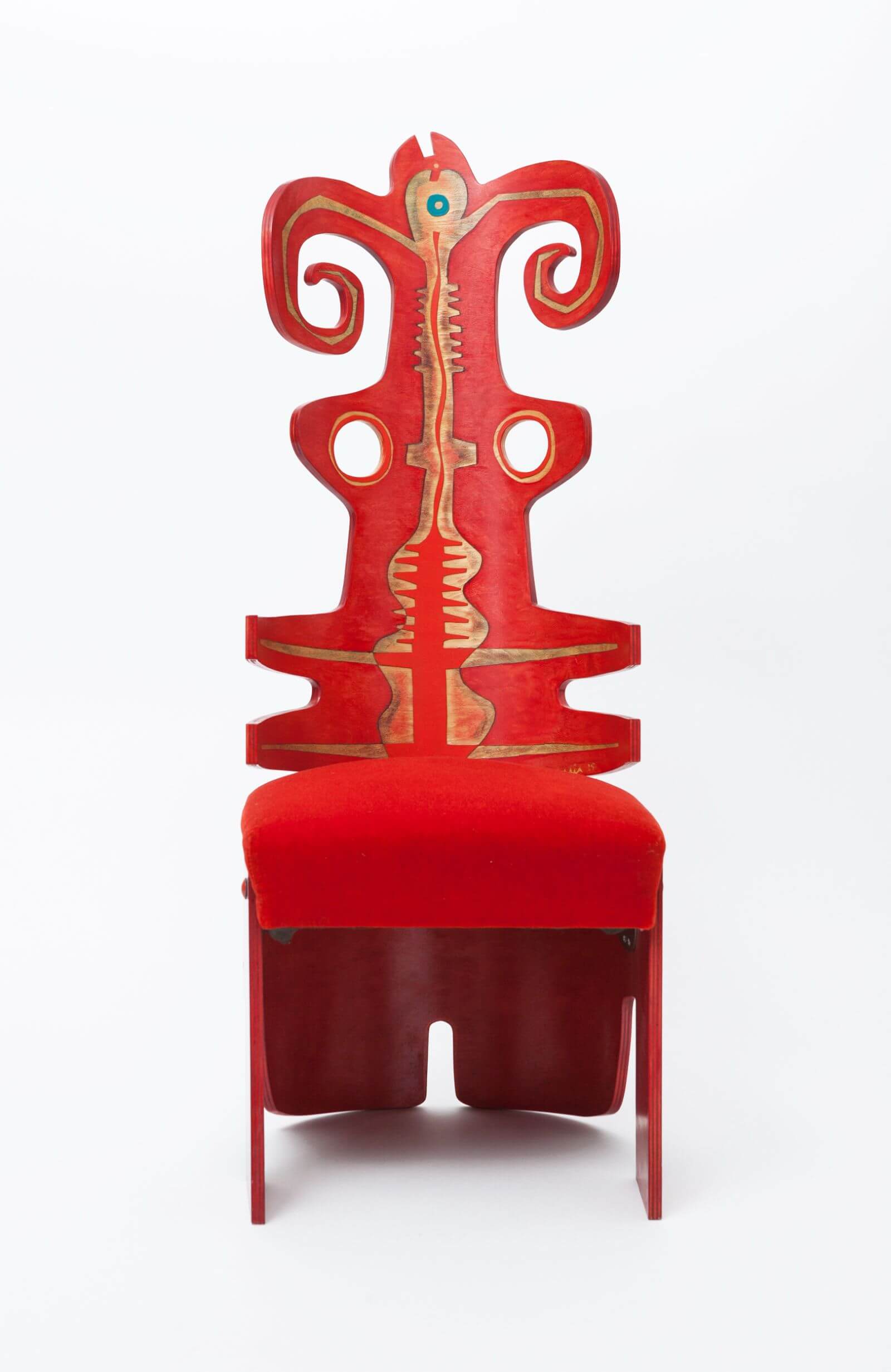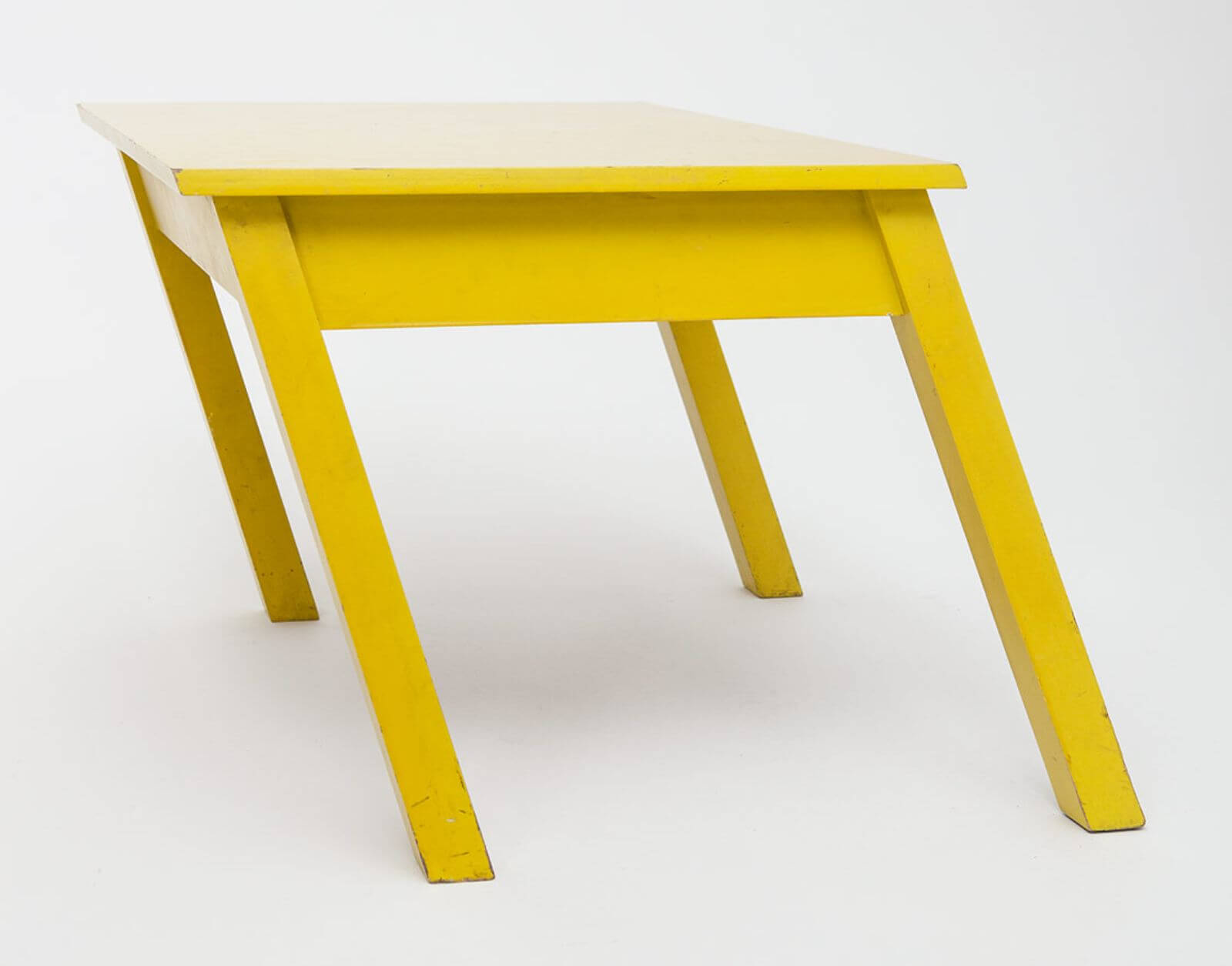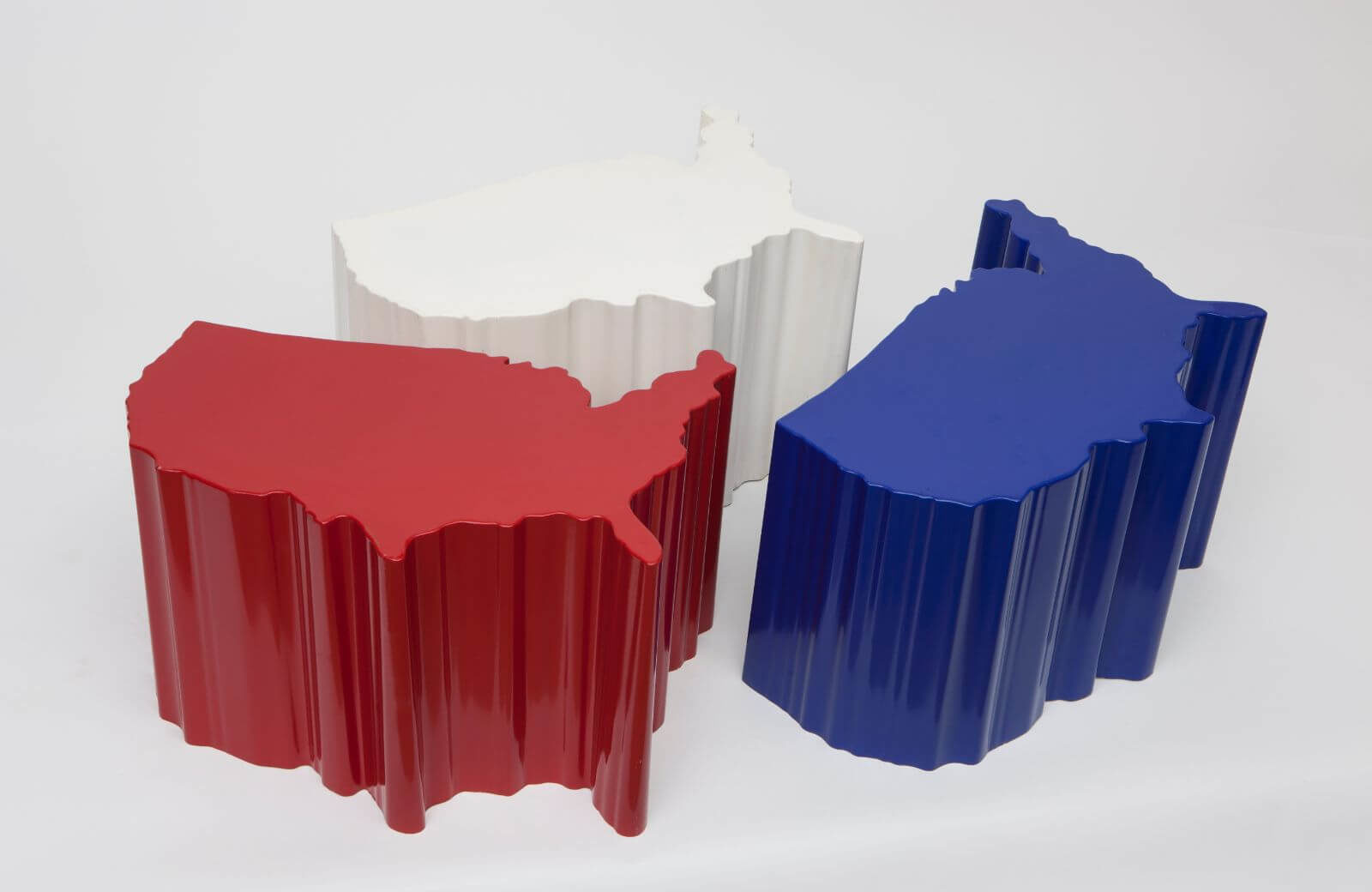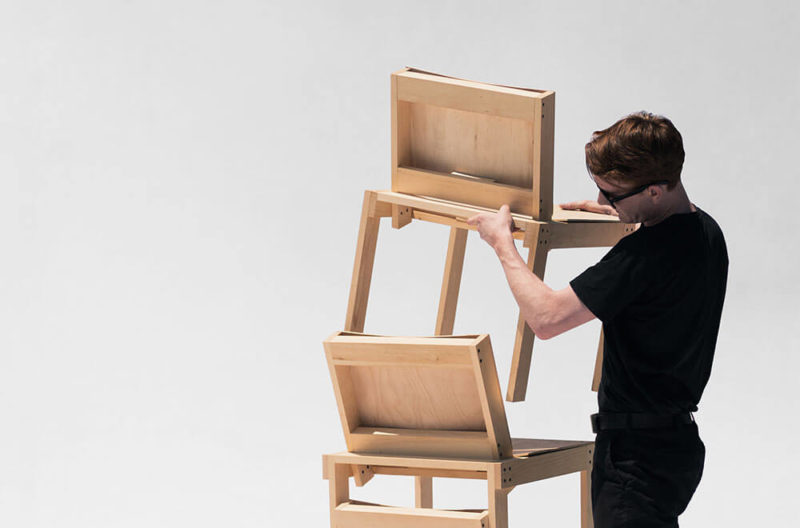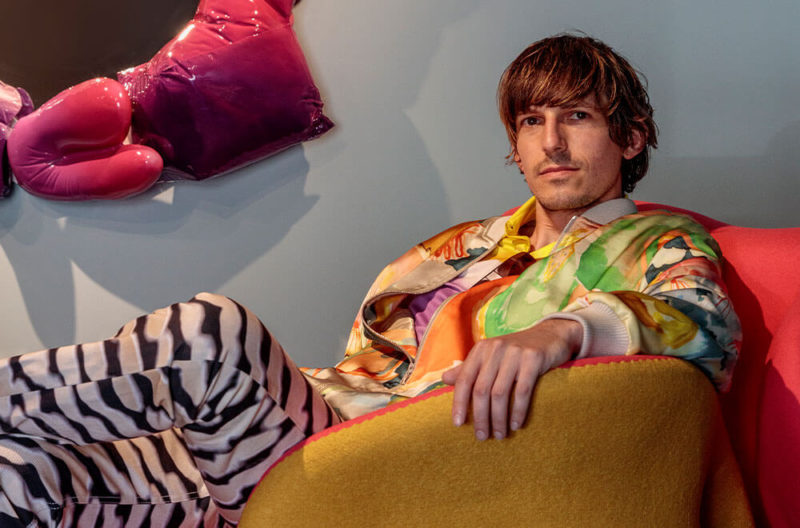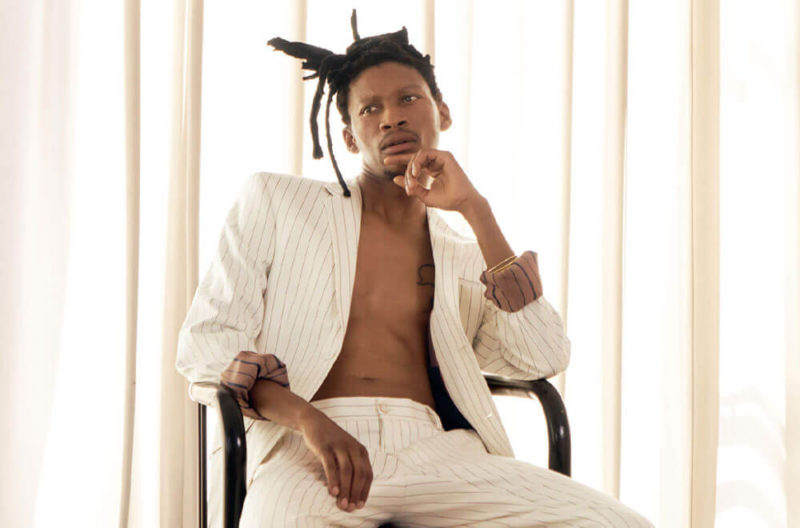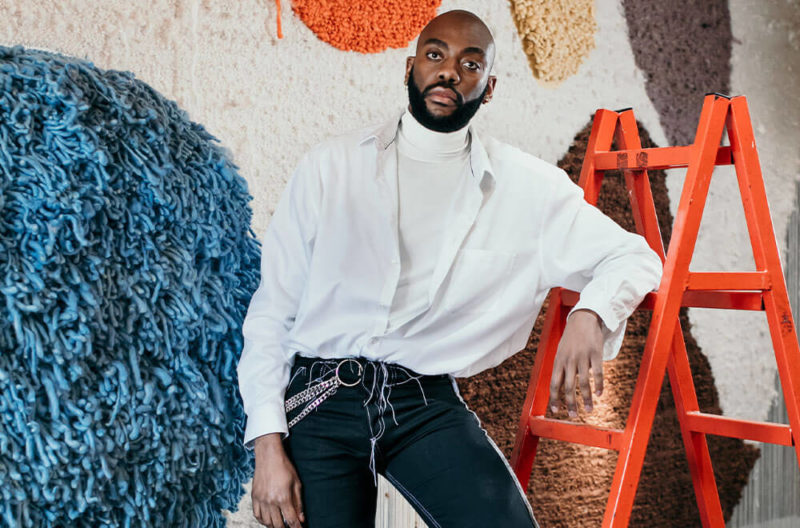Stephen Markos
The founder of Superhouse talks about his passion for promoting young talents in the collectible design field.
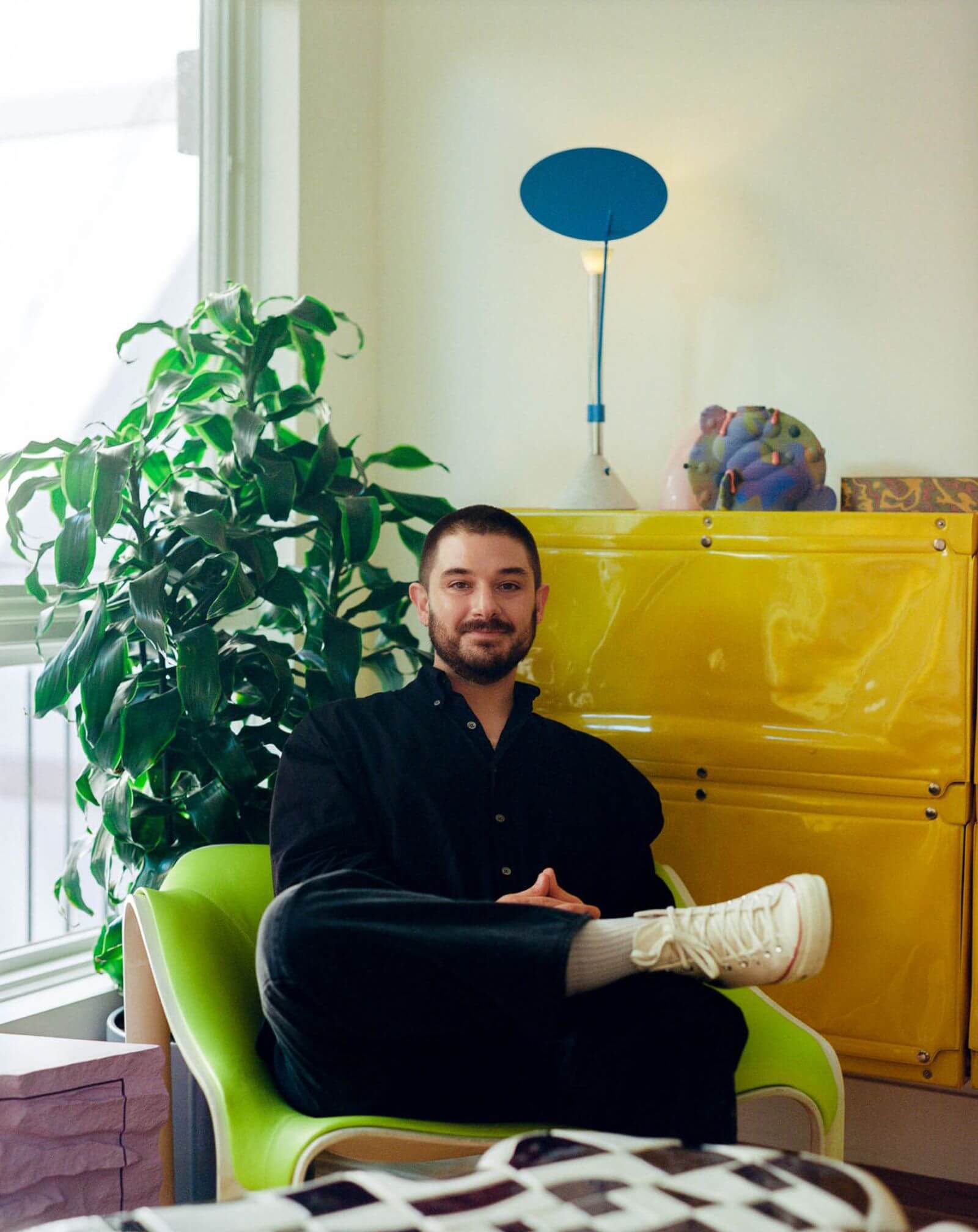
Stephen Markos
COURTESY: Stephen Markos / PHOTOGRAPH: Sean Davidson
FROM DEVELOPING THE world’s first online auction platform in the late 2000s to establishing New York-based gallery Superhouse, Stephen Markos has long been a trailblazer. Matching a background in art history with a future-forward business mindset, the culturemaker-cum-entrepreneur transcends disciplinary boundaries to promote young talents shaping what he calls functional art: objects that are as much about their intended purpose as they are self-expression, cultural critique, and challenging traditional material applications.
Ahead of a busy autumn and winter season, Markos spoke to The Design Edit about his background, vision, and upcoming programme, which will make full use of his new Chinatown brick-and-mortar space.
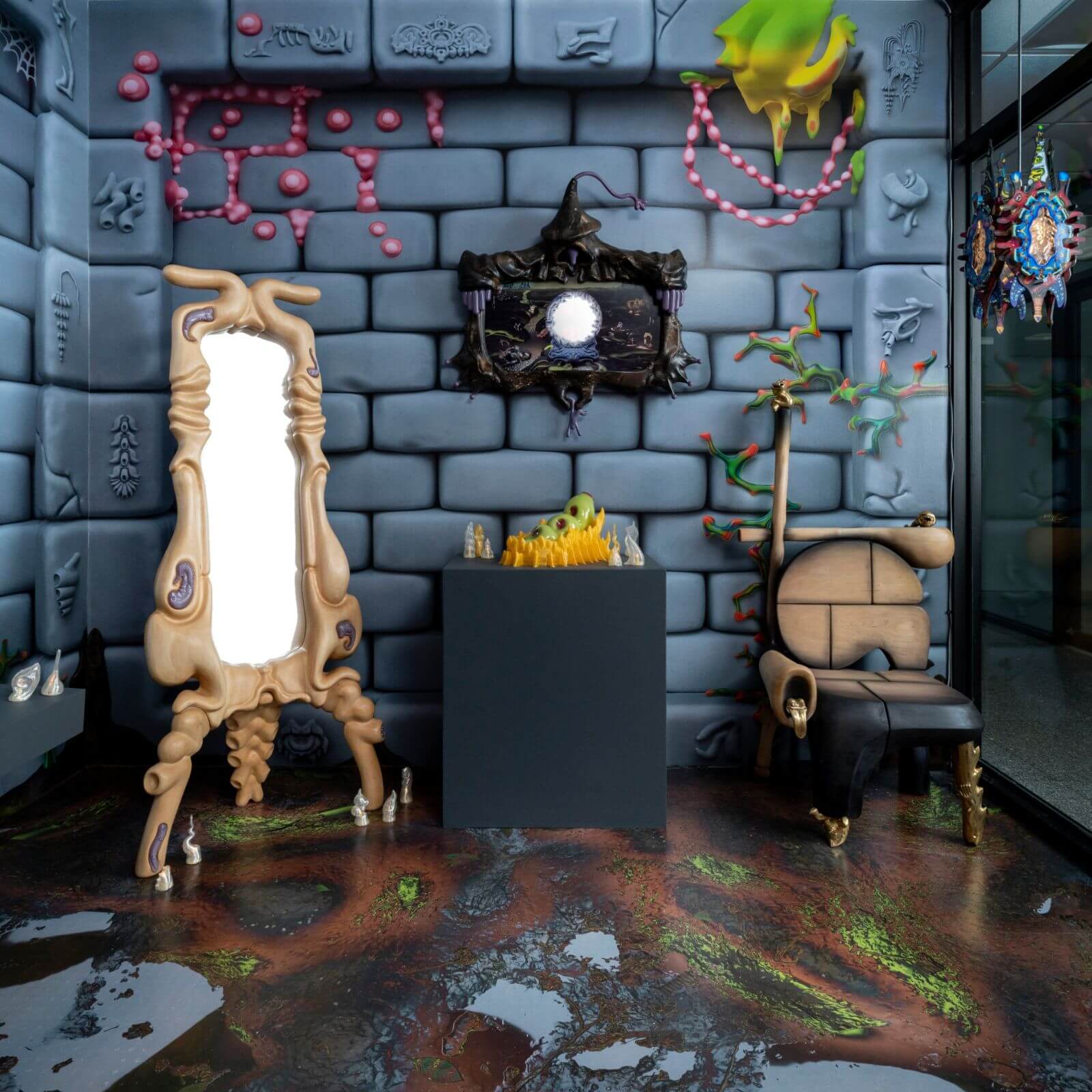
Exhibition view, ‘Ryan Decker: Feudal Relief’, 2022
COURTESY: Ryan Decker & Superhouse / PHOTOGRAPH: Sean Davidson
The Design Edit: How did you first come into contact with art and design?
Stephen Markos: I grew up in Boston, surrounded by antiques and the city’s many institutions. Visiting The Isabella Stewart Gardner Museum as a child gave me insights into personal taste and the idea of living with art. Modelled like a Venetian palazzo, the house museum is filled to the brim with the late namesake’s Renaissance painting and furniture collection, still in situ as she left it. These early experiences influenced my lifelong study of art and design history.
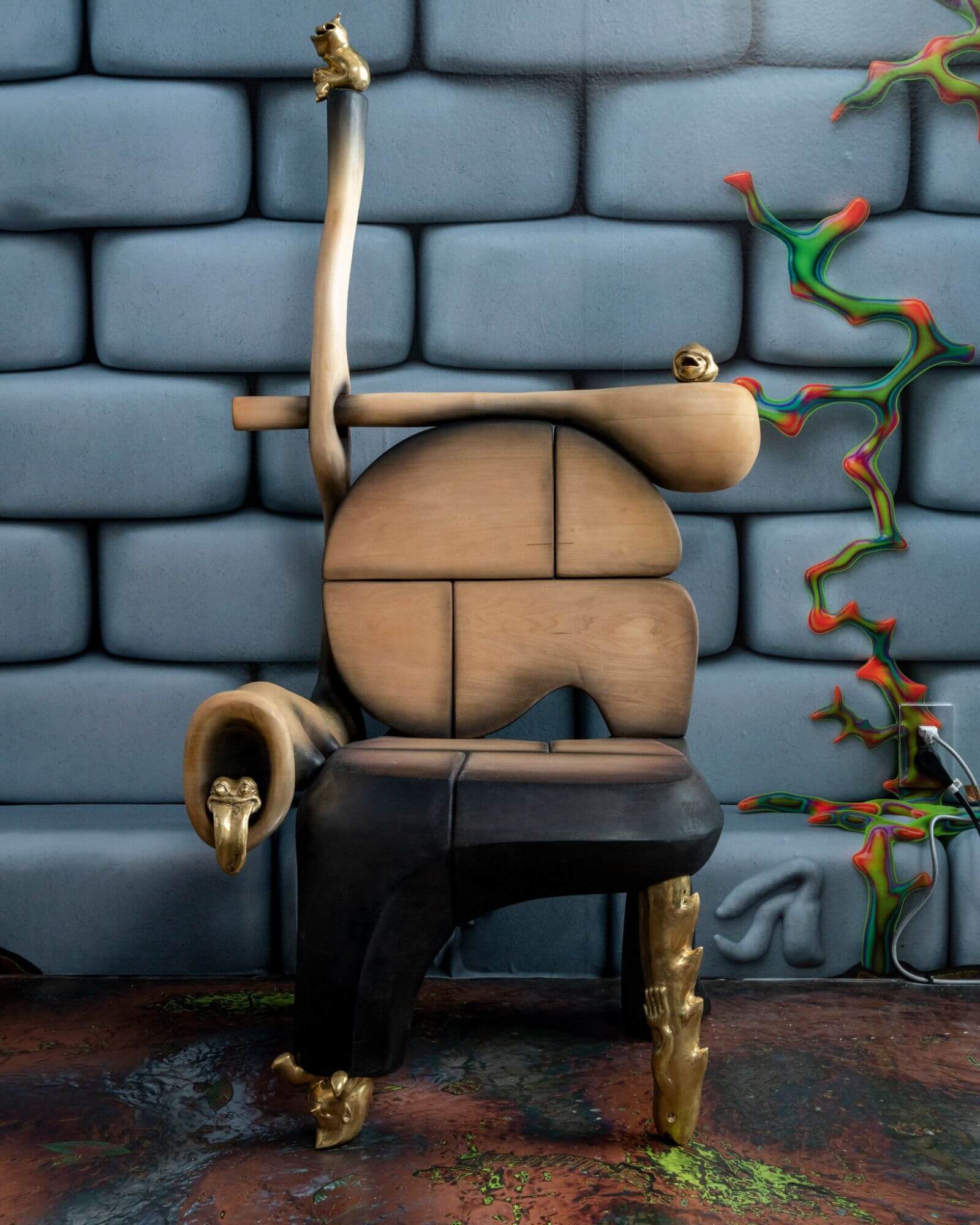
Ryan Decker, ‘Bricks and Bones with a Fairy on Top’ throne, 2022
COURTESY: Ryan Decker & Superhouse / PHOTOGRAPH: Sean Davidson
TDE: You’ve worked in the auction and museum worlds, what was that like? How was the idea of functional art treated at the time?
Stephen Markos: Fifteen years ago, I was part of a team at Artnet trying something wild that no one had done before: selling fine art online. It was full of challenges, but I worked with some fabulous dealers who influenced how I approach the practice today. When I moved over to Christie’s, they were innovating as well and had just started to think about live video streaming auctions. Now all of this is commonplace.
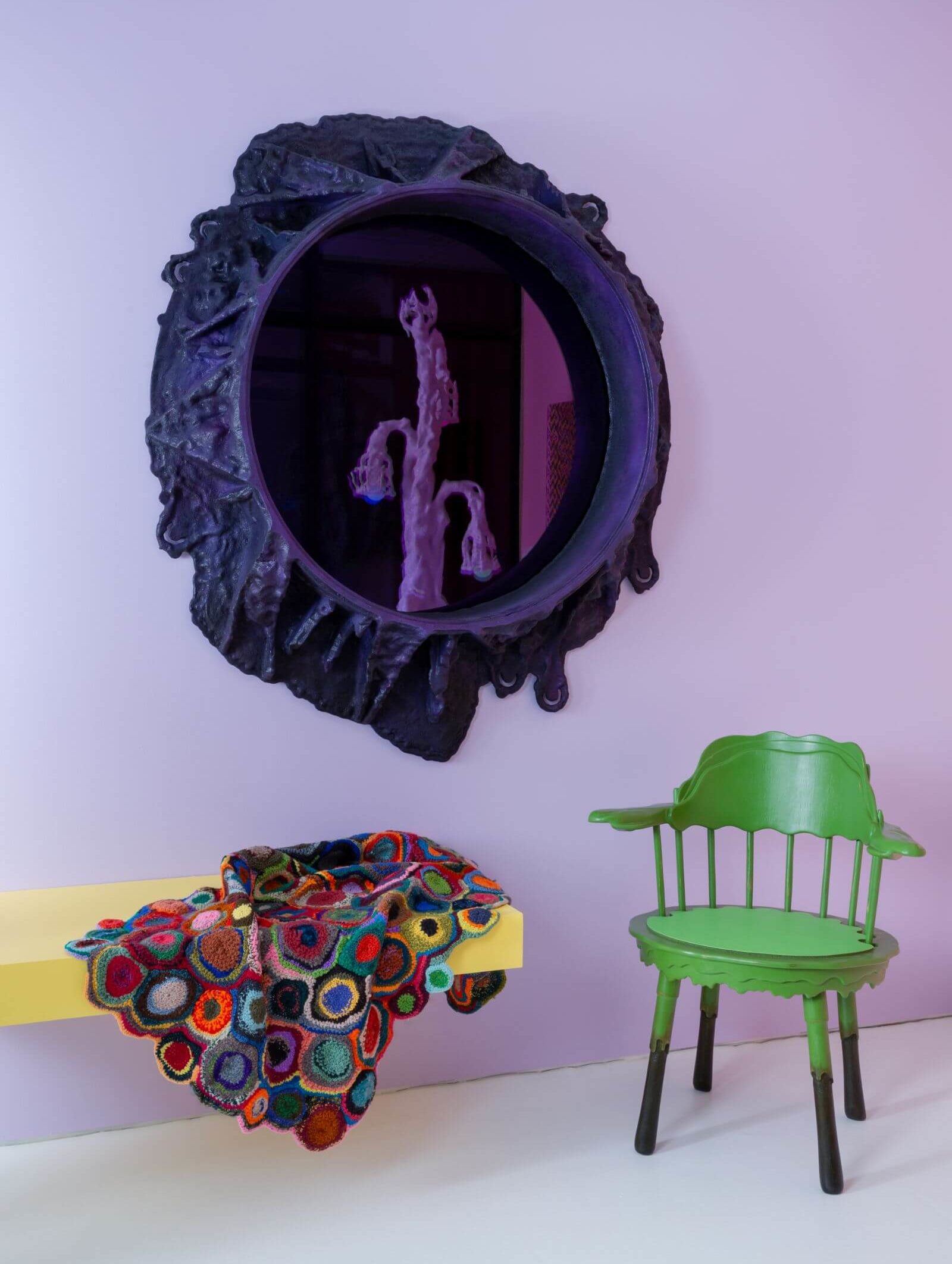
Exhibition view, ‘Isolated from Function’, with work by Aaron Blendowski and Sue Ravitz
COURTESY: Aaron Blendowski and Sue Ravitz & Superhouse / PHOTOGRAPH: Brian W. Ferry
Working for both platforms, I was surrounded by high-value art all the time. Handling an ancient Greek amphora, or walking past a Warhol, was a regular occurrence. In the world of online auctions at that time, however, the focus was on works that were easier to ship, like paintings, prints and photographs. There was not much of a focus on 3-dimensional art, let alone collectible design or art furniture. Operating the secondary market, I was limited in whom I could interact with. I rarely knew who the collectors were and never interacted with artists directly.
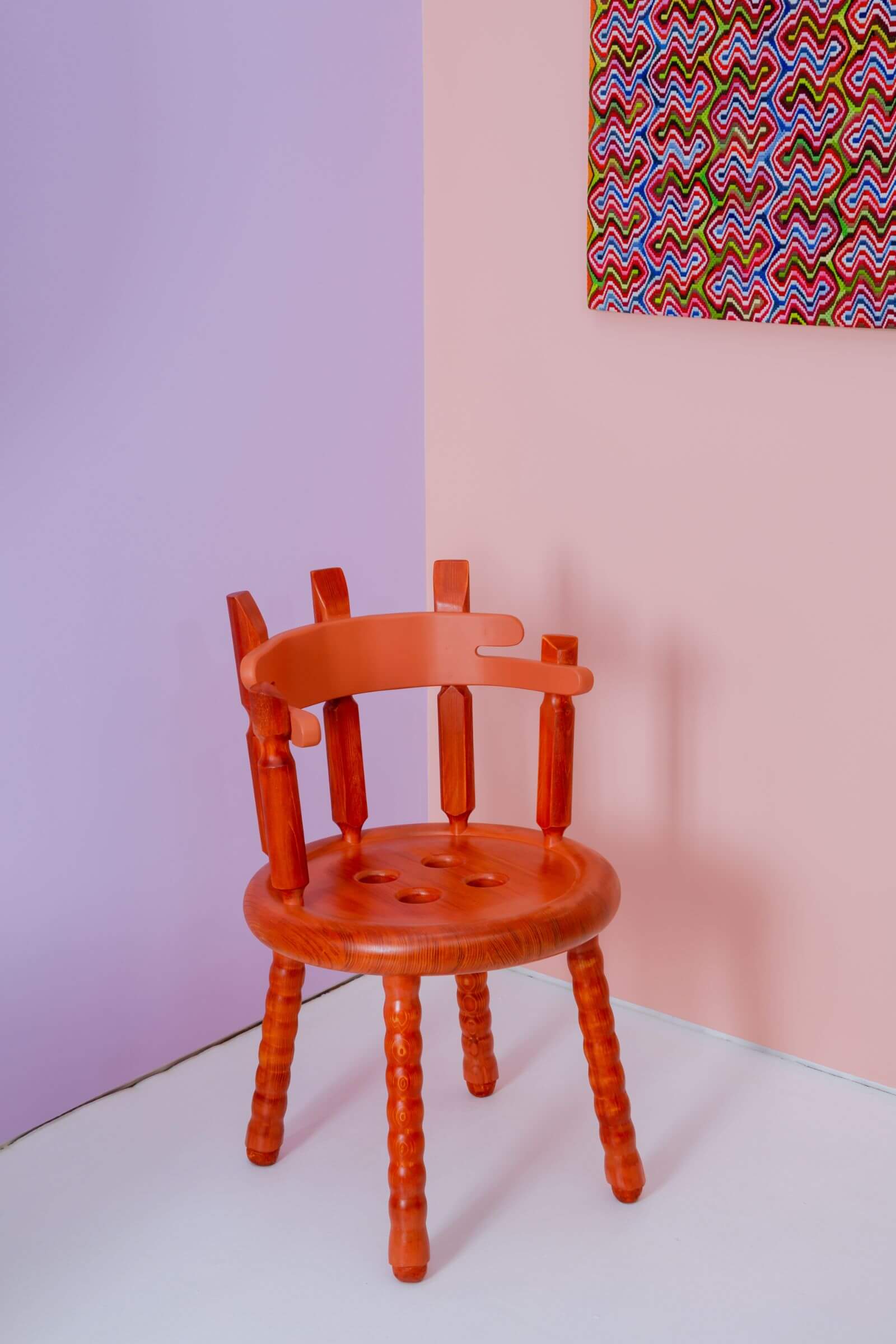
Exhibition view, ‘Isolated from Function’, with Aaron Blendowski, ‘Button Pub Chair, NEO series’, 2022 and Sue Ravitz, ‘TV Static (Red)’ needlepoint, 2020
COURTESY: Aaron Blendowski and Sue Ravitz & Superhouse / PHOTOGRAPH: Brian W. Ferry
TDE: What was the impetus behind you leaving the auction industry, moving into the gallery world, and establishing Superhouse in 2020?
Stephen Markos: I longed to work more closely with the talents. With the gallery, I find it so fulfilling to be able to help them bring their visions to fruition. I also love to see the looks on viewers’ faces as they experience the work, especially as I encourage them to take a closer look, gently tap a surface, snap a selfie, look underneath – and sometimes even smell the works.
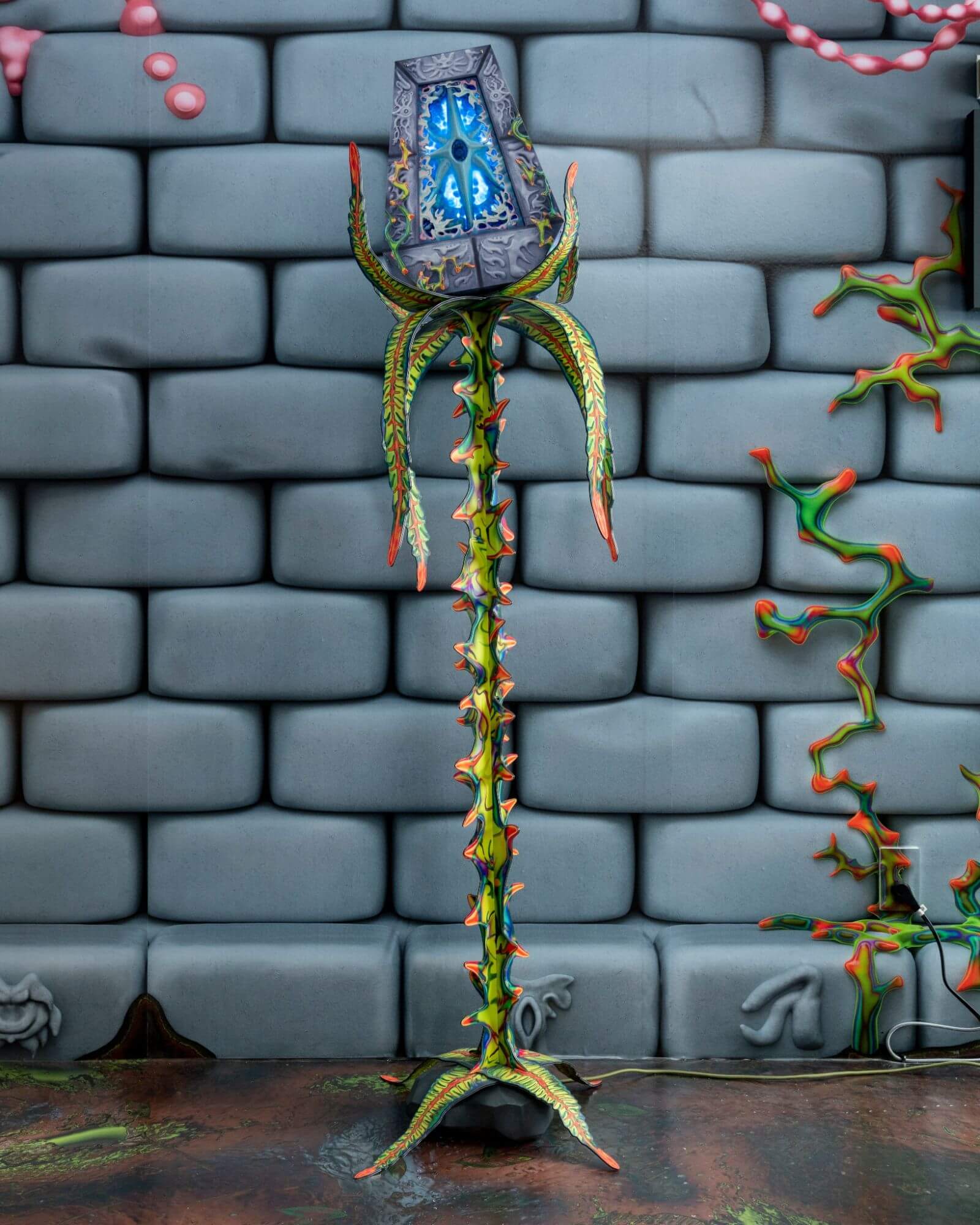
Ryan Decker, ‘Relic of Yore’ floor lamp, 2022
COURTESY: Ryan Decker & Superhouse / PHOTOGRAPH: Sean Davidson
TDE: How do you define functional art? How can furniture and lighting be used as an intellectual or artistic medium?
Stephen Markos: I don’t see the difference between a painting and a chair in terms of the ability to communicate self-expression or social critique. The colour glaze chosen for a ceramic vessel and the level of precision used in finishing a wooden surface are equal conduits for expressing an artist’s identity and how they see the world.
In his recent ‘Feudal Relief’ exhibition, Ryan Decker used furniture and lighting as mediums in which to comment on the increasing political and economic inequality of American culture. Through an engaging mix of materials, visuals, and sound, the artist drew viewers in through his highly personalised style in order to convey his ideas about our society.
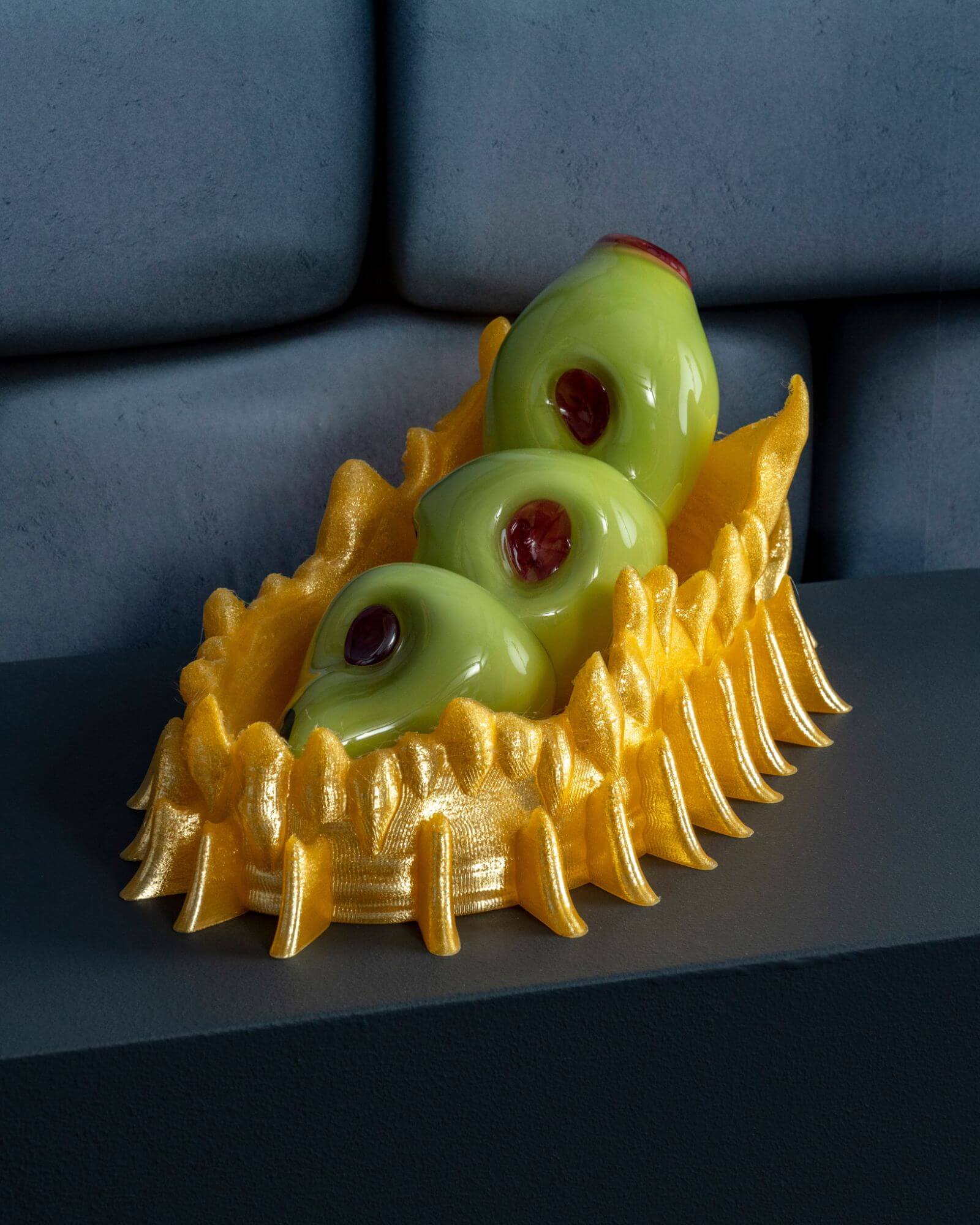
Ryan Decker, ‘Green Bean Bulwark’ vase, 2022
COURTESY: Ryan Decker & Superhouse / PHOTOGRAPH: Sean Davidson
TDE: What have been some of the highlights so far? What do you have lined up for the upcoming season?
Stephen Markos: I’m proud of all the exhibitions Superhouse has put on in the past couple of years. With partners like Friedman Benda, we’ve made advancements in how design is shown virtually. At the gallery, we’ve brought whole new bodies of work to the art and design market and championed some incredible emerging talents like Aaron Blendowski, Isabel Rower and Shaina Tabak.
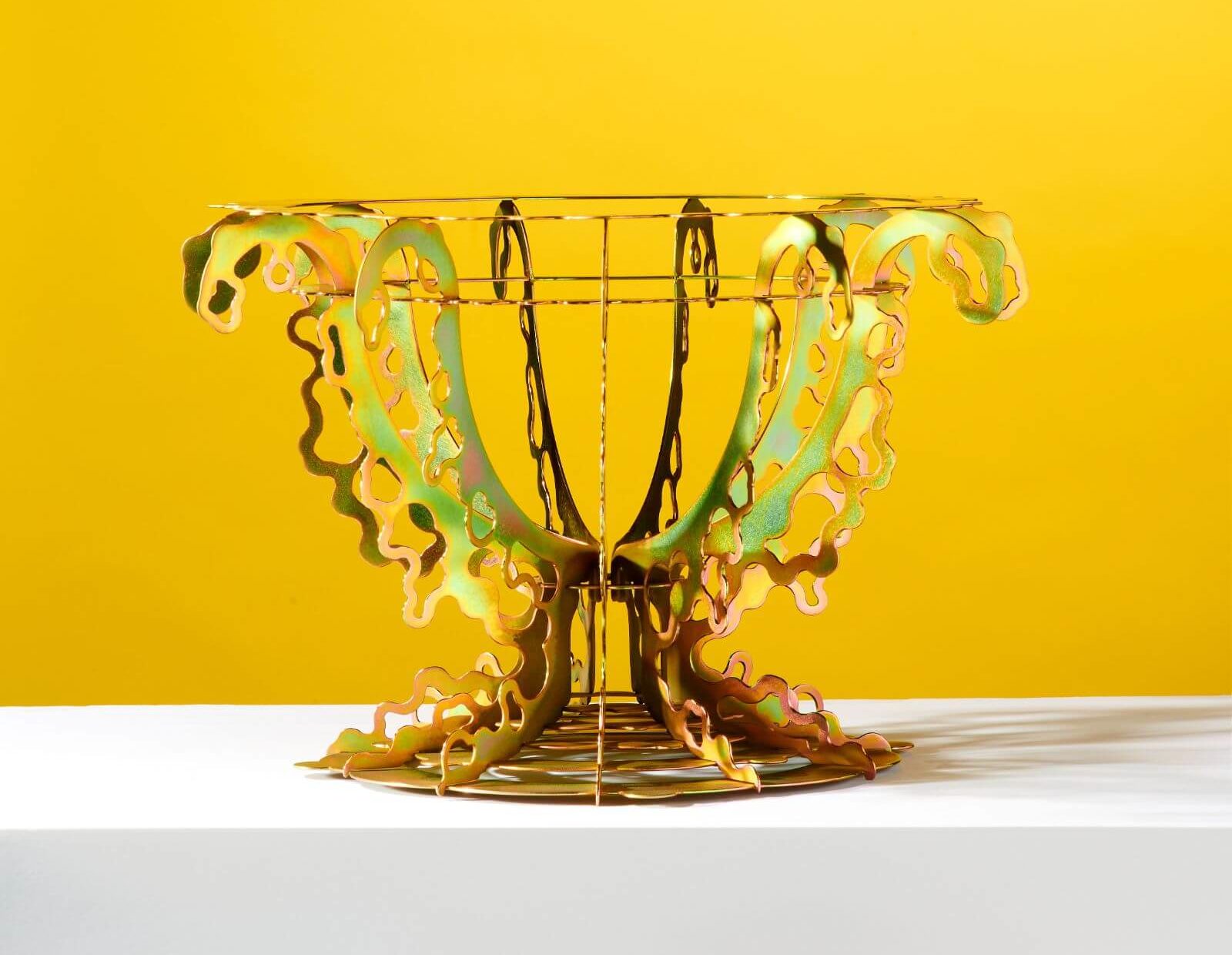
Aaron Blendowski, ‘Hollow Urn, NEO series’, 2021
COURTESY: Aaron Blendowski & Superhouse / PHOTOGRAPH: Brian W. Ferry
We are opening the Fall season with ‘Return to Downtown’, a collaboration with Magen H Gallery, which brings together works from NYC’s Design Art movement of the 1980s and 1990s by artists closely associated with the legendary gallery Art et Industrie. Many of the works haven’t been seen “IRL” in decades, so I am extremely honoured to be sharing that with Superhouse’s audience.
- Terence Main, ‘Red Twiddler’ chair, 1988 from ‘Return to Downtown’ COURTESY: Terence Main, Superhouse & Magen H Gallery
- Rafael Barrios, ‘Mesa Table’, 1980 from ‘Return to Downtown’ COURTESY: Rafael Barrios, Superhouse & Magen H Gallery / PHOTOGRAPH: © Emilie Baltz
- Dan Friedman, ‘USA Tables’, 1993 from ‘Return to Downtown’ COURTESY: Dan Friedman, Superhouse & Magen H Gallery
In November, Superhouse will hold Ellen Pong’s first solo exhibition, which stretches the artist’s practice into new materials like blown glass and wood. In December, Superhouse will have a Curio at Design Miami/, the first time we will be exhibiting at that fair and a major milestone for us.

